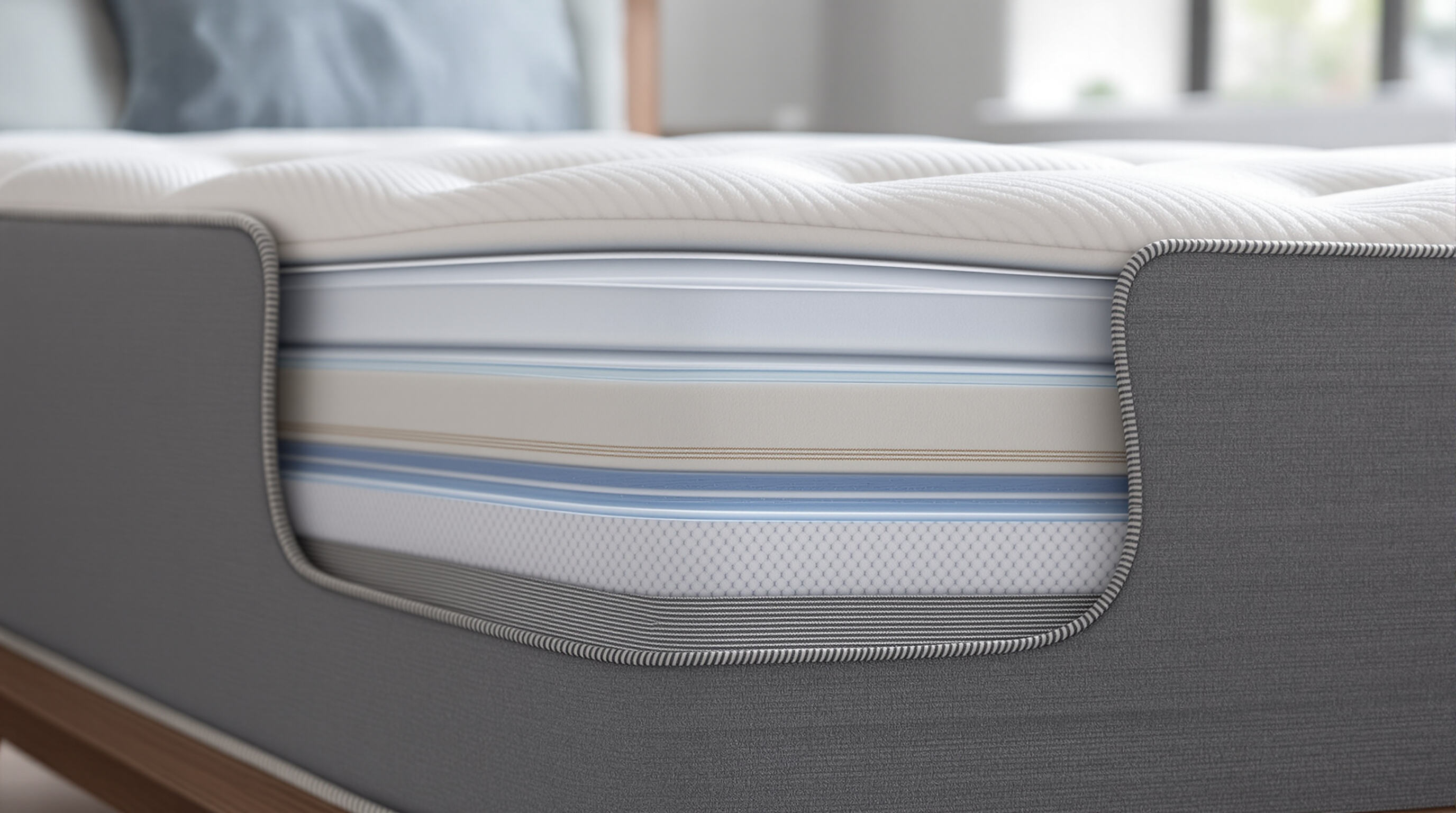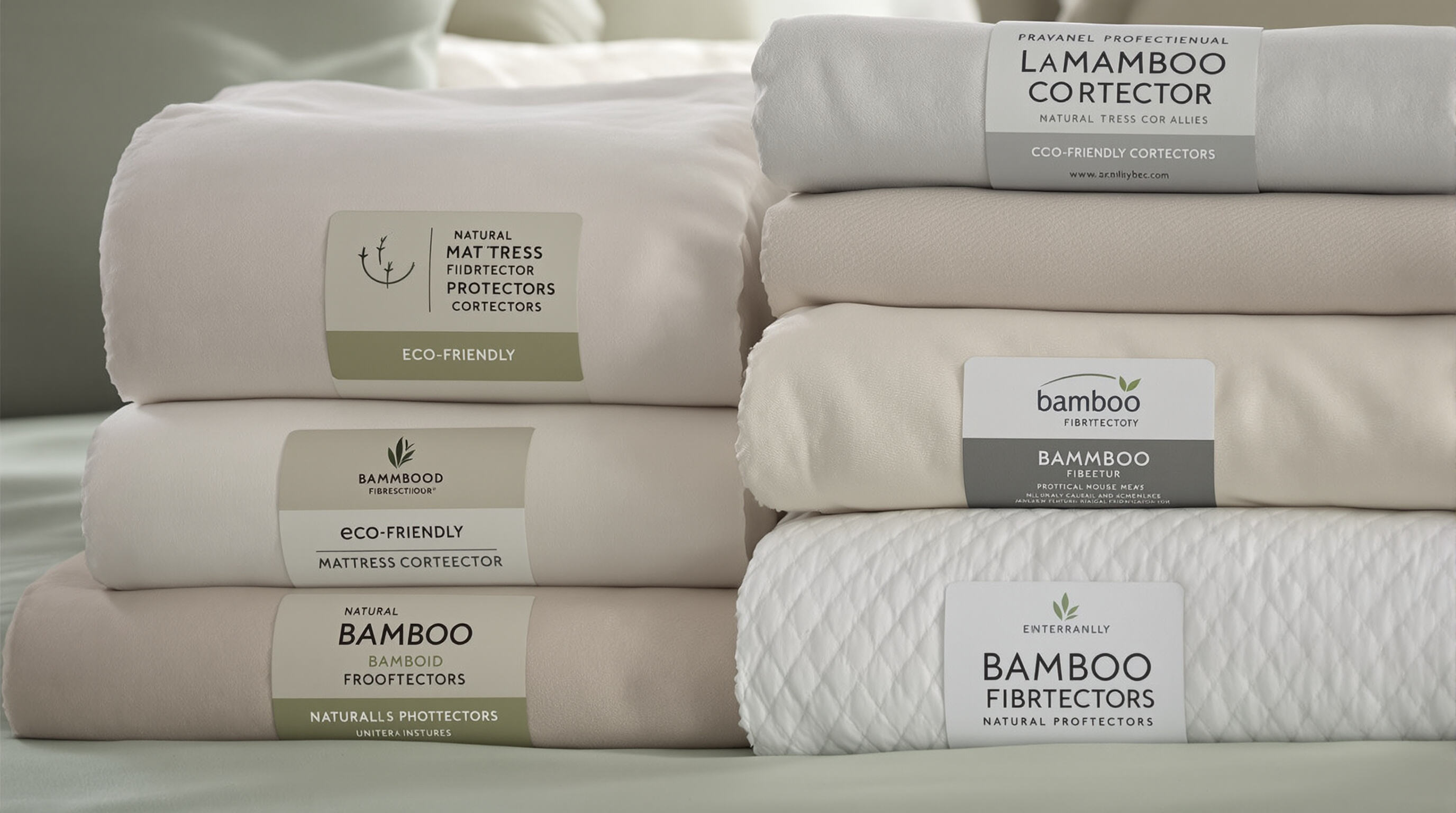
Modern mattress protectors meet three essential needs: protecting your investment, improving sleep quality, and extending mattress life. Top models use advanced materials like thermoregulating bamboo blends and ultra-thin waterproof membranes to deliver reliable defense without sacrificing comfort or breathability.
When choosing a protector, focus on these key features:
Independent labs assess waterproof models through 24-hour fluid immersion and accelerated wear tests. Breathability is measured using infrared sensors to map heat dissipation. According to the 2024 Mattress Protector Performance Report, top-tier protectors block 98% of spills while maintaining airflow similar to an unprotected mattress.
Recent studies show 73% of users prefer a “barely there” sensation over maximum protection. Microfiber-knit protectors now mimic the softness of 400-thread-count cotton sheets, while hexagonal foam quilting in premium models conforms better to body contours than traditional batting.
Washing frequency impacts longevity—weekly washing typically results in 18–24 months of use, while monthly washing can extend lifespan to 36+ months. Reinforced stitching resists fraying, and ultrasonic-sealed seams preserve waterproofing more effectively than stitched alternatives. For best results, follow validated washing protocols using mild detergents and low-heat drying cycles.
Waterproof mattress covers really help stop those accidental spills and leaks no matter what size bed someone has, even for twins. The newer ones have these advanced moisture barriers that keep things dry without feeling like old fashioned rubber sheets that were so stiff and uncomfortable. When researchers test how well they work, they basically pour between quarter and half a liter of water on them and check if anything gets through. Premium quality options block more than 99 percent of liquid penetration based on tests from last year. And the best part? These high performing covers stay effective at keeping beds dry even after going through multiple wash cycles, which is something many people overlook when shopping for bedding solutions.
When checking if waterproof protectors work well, they have to pass tests based on standards such as ISO 811 for hydrostatic resistance. These tests basically see if the protector can hold back water pressure from a column about 15 to 20 centimeters high without letting any water through. Manufacturers also simulate washing cycles repeatedly because studies show around 37 percent of cheaper models start failing after just fifty washes according to Consumer Reports data from last year. The better quality ones often come with extra strong stitching along the edges where most problems happen. We've seen this issue affect roughly 42% of lower priced options. Getting certified isn't just marketing fluff either. Real world certifications actually prove something works under controlled conditions instead of relying solely on what companies say about their products.
Waterproof barriers vary by material performance:
| Material | Thickness | Noise Level | Eco-Profile | Estimated Lifespan |
|---|---|---|---|---|
| TPU | 0.8-1.2mm | Virtually silent | Recyclable | 5-7 years |
| Polyurethane | 0.5-0.8mm | Potential crinkle | Petroleum-based | 3-5 years |
| Polyester-laminate | 0.3-0.5mm | Noticeable rustle | Non-recyclable | 2-4 years |
Seventy-four percent of premium waterproof protectors now use TPU due to its superior flexibility, breathability, and quiet performance.
The belief that waterproofing causes overheating stems from outdated vinyl models. Modern protectors use microporous membranes that allow vapor transmission exceeding 800g/m²/24hr. Quality units maintain airflow within 5–7% of an unprotected mattress (ASTM D737 testing), with breathable backings that support, not hinder, air circulation—especially in cooling-focused designs.
Sleep cooling systems work their magic through special phase change materials that soak up extra warmth as our bodies get hotter. The latest fabric tech features those fancy 3D air channels which really helps us stay cool, making breathing easier by around half again compared to regular bedding materials. This means less sweating and discomfort where we lie against the mattress. According to some recent studies published last year in Textile Testing Journal, people who use these products actually experience drops in skin temperature between two to three degrees Celsius on those hot summer nights. Brands such as Outlast have developed smart textiles that respond automatically to our unique body temperatures throughout the night without needing any power source whatsoever.
High-performance fabrics absorb moisture in 0.1–0.2 seconds and disperse sweat via capillary action. Rapid-drying synthetics like Coolmax™ minimize humidity, which can disrupt sleep. Data shows effective wicking keeps surface humidity below 55% RH, well under the 75%+ levels linked to discomfort in thermal imaging studies (Sleep Health Foundation 2024).
Bamboo-derived viscose has thermal absorptivity of approximately 0.18 Ws¹/²/m²K—31% lower than cotton—providing a cooler initial touch. Its natural wicking works through hydrogen bonding, avoiding chemical treatments and preserving performance over time. Emerging materials like eucalyptus lyocell and seaweed cellulose offer enhanced breathability while maintaining liquid resistance.
For allergy sufferers, protectors with pores under 10 microns block 98% of dust mites and 94% of pet dander (AAFA 2023). Leading models combine medical-grade polyurethane with antimicrobial treatments to prevent mold, while breathable bamboo-viscose surfaces avoid heat retention.
Choose products with dual certifications:
True twin protectors need 15"–18" deep pockets to fit modern youth mattresses. Non-slip silicone grip strips prevent corners from lifting during movement—a feature missing in 63% of basic models (Sleep Products Association 2024).
Elasticated 360° skirts maintain position after 50+ washes, while 2.5mm silicone nubs reduce slippage by 89% compared to standard PVC dots.
Tom's Guide's 2025 expert-rated selection highlights polyester-TPU hybrids offering 30% better waterproof durability than vinyl in this price range. Reinforced seams and quiet fabric outperform 78% of competitors in noise tests.
Protectors with 3D spacer fabrics retain shape through 100+ washes (vs. 25-cycle industry average). Bleach-safe options extend usable life by 2–3 years, offering greater long-term value.

The right protector depends largely on what kind of home environment exists. For households with kids running around or furry friends bouncing about, going for waterproof twin protectors makes sense. Look for ones with TPU membranes and those stretch fit designs that actually stay put even when things get chaotic. People dealing with allergies will find relief in protectors featuring anti microbial barriers. These have tiny pores under 10 microns which stop allergens from getting through while avoiding any release of irritating substances. Homes with multiple pets often work best with organic cotton covers combined with deep envelope fits. This setup keeps everything from sliding off during the night and maintains sheet integrity throughout their busy days.
According to the Global Green Textiles Report from 2025, there's been quite a jump in OEKO-TEX certified bedding products over the past two years actually around 78% growth since 2023. Consumers want their sleep gear to be both safe and environmentally friendly these days. Bamboo fabric stands out because it keeps its cooling properties even after dozens of washes, plus it doesn't release those annoying chemical smells that some synthetic materials do. Sustainability isn't just about the product itself anymore either. Many companies now focus on making sure their packaging can be recycled properly and include biodegradable components that break down instead of sitting forever in landfills. We're also seeing some interesting innovations with materials like hemp blended with Tencel. These combinations create durable yet comfortable textiles that appeal to eco-minded shoppers looking for quality without compromising their values.
Durability depends on materials and construction. Independent testing reveals:
| Protector Type | Average Lifespan | Wash Tolerance | Performance Retention |
|---|---|---|---|
| Vinyl Waterproof | 1-2 years | 20-30 cycles | Liquid barrier fails |
| TPU Layer Models | 3-5 years | 50+ cycles | 98% waterproof intact |
| Organic Bamboo Blends | 4-7 years | 100+ cycles | Cooling unaffected |
| Polyester Quilted | 2-3 years | 40 cycles | Noise increases post-wash |
Textile laboratories’ 2025 evaluations confirm that bonded edge seams and surround stretch skirts offer the best structural integrity. Side-zip encasements enhance allergen defense, aligning with American Lung Association recommendations. Long-term savings emerge through fewer replacements and extended mattress warranties.
TPU is favored for its flexibility and silent performance, while polyurethane offers effective waterproofing though with potential crinkling sounds.
Allergy-friendly protectors block dust mites and pet dander through small pore sizes and antimicrobial treatments. Look for OEKO-TEX and CertiPUR-US certifications.
Yes, modern protectors incorporate phase change materials and 3D air channels to enhance cooling and maintain breathability.
 Hot News
Hot News2025-09-04
2025-09-02
2025-09-01
2025-07-08
2025-06-10
2025-11-27